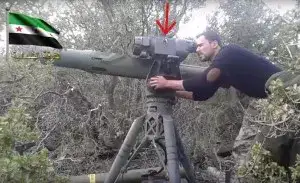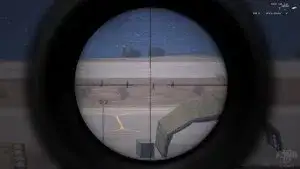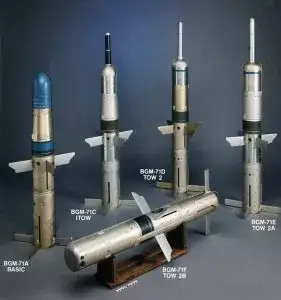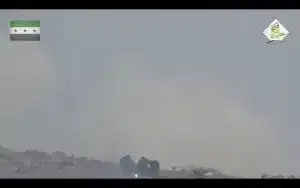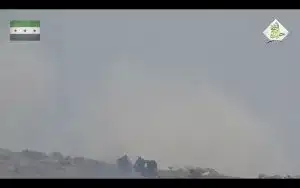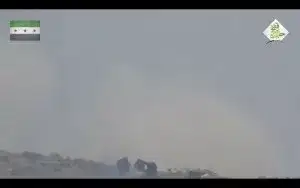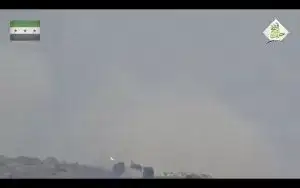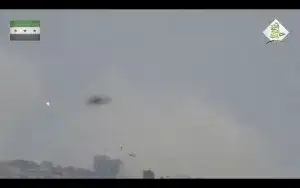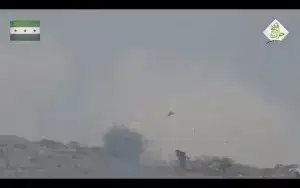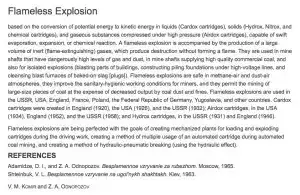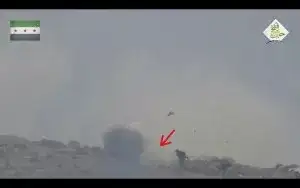Castles in the air have become tangible citadels
May 11, 2023 by Thomas Wictor
I always loved the idiom “castles in the air.” It means “extravagant hopes and plans that will never be carried out.” Until the summer of 2015, I thought that all optimistic forecasts for the Middle East were castles in the air. Now, it’s clear that not only will there be peace, it’s going to happen sooner rather than later. The key was new weaponry and an ability to see the big picture.
To and from castles
Before I talk about another completely futuristic weapon that has been deployed in Syria, I should point out that today was very busy for US Air Force bases in Southern California.
Civilian air traffic into Los Angeles International Airport (LAX) was rerouted for two hours, and over 100 military transports flew between Vandenberg Air Force Base, Edwards Air Force Base, and the Joint Forces Training Base in Los Alamitos.
In the thirty years that I’ve visited and lived here, I’ve never seen military transports flying to the Joint Forces Training Base. It has gigantic runways.
Every branch of military service can train there.
Below, three contrails from the Pacific to Vandenberg (left to right) and two contrails from Vandenberg to Los Alamitos.
Next, about twenty contrails headed from Vandenberg to Edwards, and one from Vandenberg going out over the Pacific.
There were actually two transports flying toward the Pacific, but my camera’s batteries died before I could capture the second one.
Then we have eight contrails going from Vandenberg to Edwards, one from Los Alamitos to Edwards, and one from Edwards heading out over the Pacific.
My camera wasn’t able to catch it clearly, but below is a Boeing C-32B, used by the US Air Force Special Operations.
It’s the second time I’ve seen one. This transport was headed to Vandenberg from somewhere over the Pacific.
Below are about fifteen contrails from Vandenberg to Edwards.
Finally, we have two from the Pacific headed to Edwards.
There were about 100 over a two-hour period. Dozens traveled in pairs, and some were twice as fast as the airliners that come into LAX. Several disappeared right in front of my eyes. My brother Tim said that when an aircraft gets beyond a certain height and speed, the contrails wink out.
I’d be very surprised if all this activity had anything to do with American military operations.
During the past year the size of the active force has been reduced by 16,548 soldiers, the rough equivalent of three brigades.
Endstrength for March was 479,172 soldiers, which is 154 fewer troopers than were on active duty when the Army halted the post-Cold War drawdown in 1999 with 479,424 soldiers, the smallest force since 1940, when the active component numbered 269,023 soldiers.
In 1940, the US population was 132 million. Now, the population is 319 million. The 1940 US Army would equal 645,655 soldiers in 2016, compared to the 479,172 who are actually serving today. If we scale the current US Army strength to 1940, it would be 199,655. The real 1940 number was 269,023.
We’re idiots.
No longer castles in the air
While we stumble around in the dark, blathering, others have utterly outclassed us in every way. Yesterday I found a video that appeared to show a flameless explosion in Aleppo, Syria. Today I learned that I was correct.
In Yemen, Syria, and Iraq, the Arab League and its allies are killing as few civilians AND COMBATANTS as possible. The Israeli-Arab approach to war is science fiction finally made real.
In Israeli-Arab warfare, weapons are targeted. Humans are killed only when there’s no other choice.
Below, an antitank guided missile (ATGM) is fired at the ATGM of Iranian proxies outside Aleppo, Syria. Behold the flameless explosion.
The red dot is the beacon of the ATGM. When an operator fires the missile, he uses that beacon in a process called “Semi-Automatic Command Line of Sight” (SACLOS). A BGM-71 TOW launcher has a sight on the side (red arrow).
After the ATGM is fired, it spools out two lines of copper wire behind it, keeping it connected to the sight. Inside the sight is a cross hair.
The missile operator makes adjustments to keep the cross hair on the target. A tracking camera inside the sight films the beacon on the tail of the missile, automatically changing the flight path by sending signals through the two copper wires. TOW missiles are controlled with fins.
Until today, I thought that these munitions did their damage in two ways: either the kinetic energy of the projectile itself, or a chemical reaction that released heat and a violent pressure wave. But you can see with your own eyes that there was no flash of light from either the ATGM fired or the one struck.
The light flying off to the left is a fragment of warhead from the enemy ATGM. Both munitions blew up, but they were flameless explosions.
Castles on the ground
A while back, some poor guy on Twitter tried to get to some “experts” at Harvard interested in my posts. The experts just laughed and laughed. It didn’t bother me, because I overcame my horror of rigid imbeciles back in 2007, when I published a book about World War I German flamethrowers. It contains ideas that challenge multiple cherished notions held by World War I historians. They reacted with a kind of jeering disgust that I hadn’t anticipated.
At the time, I wanted my work to be included in the pool of collective knowledge about the subject. Now, I’m indifferent. A few people recognized the value of what I’d done, but the vast majority were so hostile that I withdrew from the community of World War I historians. Life is too short to spend debating morons who think that knowledge is proprietary.
When Harvard experts laugh at me, it’s the same as this.
Arrogant, grinning Third Worlders thinking that raising their middle fingers is going to make Americans meekly continue to pay for their corruption and failure.
Hubris. It’s a built-in self-destruct mechanism. Whatever my ultimate fate, it won’t be putrefaction as I scream “¡No me gusta!”
Israeli-Arab castles
So what the hell is in these new missiles? This.
That has to be the answer. The Israelis applied mining technology for their munitions. You can see that the missile that was fired produced a flameless explosion (red arrow).
The dirty-gray smoke is from the missile that was hit. Massively pressurized inert gas was released from the ATGM fired by Arab League strategic special operators. That gas blew the clothing off of the Iranian proxies, smashed their missile to pieces, and prevented a fireball. A kinetic weapon would not have stripped the men of their uniforms.
Thus another way to fight major wars without really hurting anyone. This weapon is genius on too many levels to count. And don’t kid yourselves: Rebels didn’t fire it. The action took place behind enemy lines. We’re finally getting to see the total havoc that Arab and allied strategic special operators are wreaking in Yemen, Syria, and Iraq. The psychological effect on the enemy is devastating.
Good.









